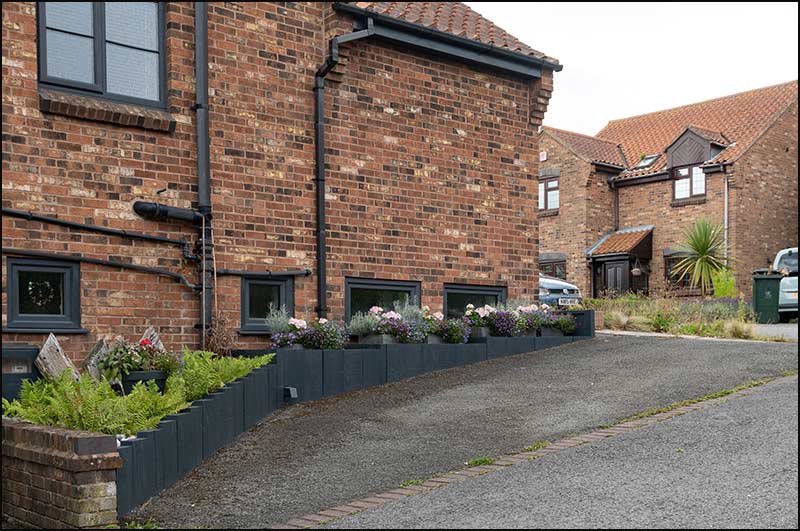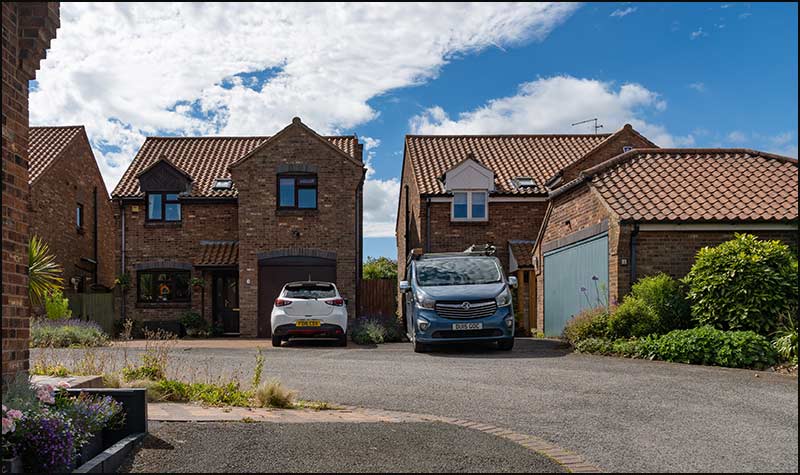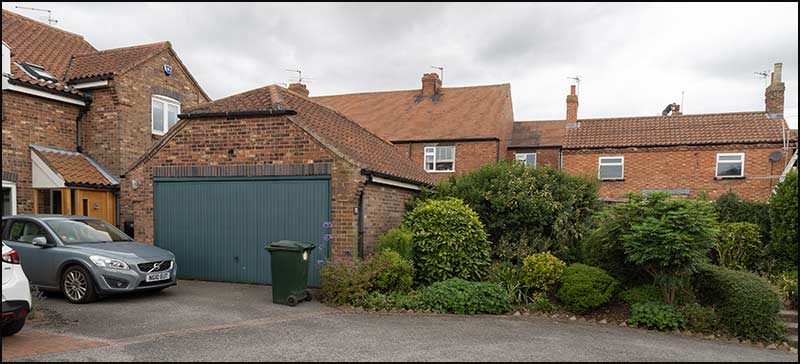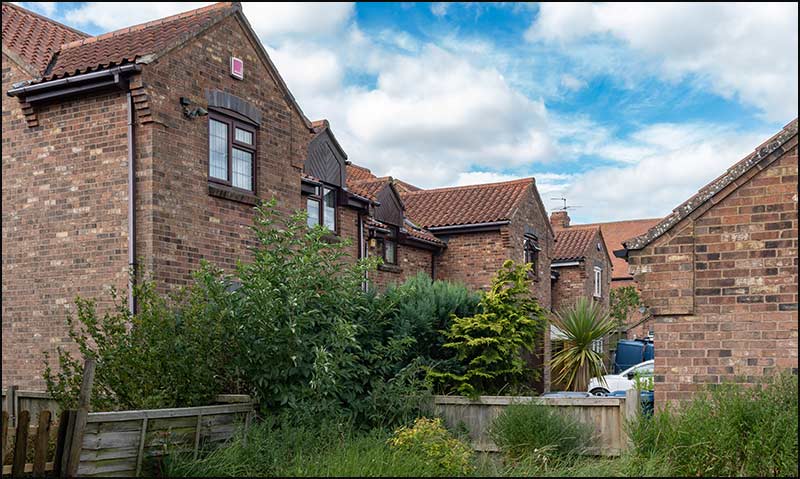Cropwell Bishop Streets: — Richards Close (21-8-20)

Designing the layout of houses and roads for a new housing development must be a dream job. To look upon open land and imagine the route of roads that are both safe and offer glimpses of beautiful views. To have pedestrian twitchells that provide safe but exciting short-cuts to play areas, parks and allotments.
The reality for most builders is very different.
A parcel of land squeezed between existing buildings, a right of way through it and narrow openings and slopes that make it difficult to even get the builders on site.
The builder certainly needs imagination, but not to plot sweeping roads, rather to make homes fit in the most efficient way that leaves house-buyers happy and the builder with enough profit to build another day.
That brings us to Richards Close.
Until 40 years ago, the space it occupies opposite Barratt Close on Nottingham Road was a small, sloping field occupied by the occasional wandering sheep.

On the right is the end of Jubilee Drive Houses (1960s)
On the left was the Methodist Chapel and its Sunday School, and on the right were joined-up houses known as Jubilee Drive Houses. These homes were built in 1935, the Silver Jubilee year of King George V and Queen Mary. The field was known as Jubilee Field.
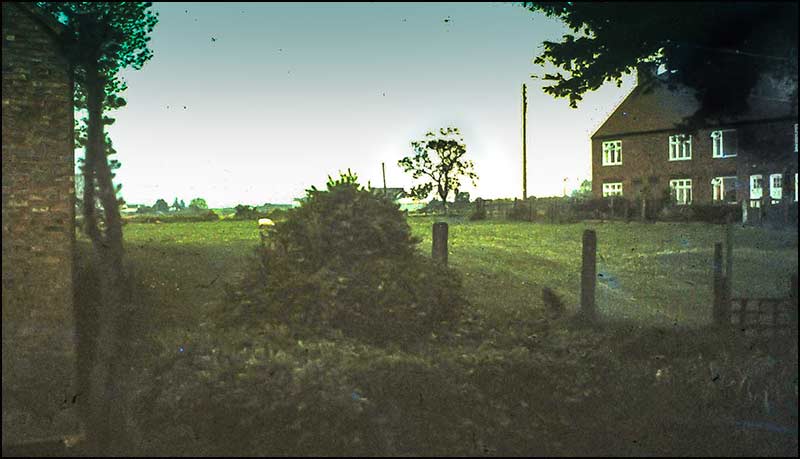
Jubilee Drive Houses on the right – Sunday School Room on the left. (1960s)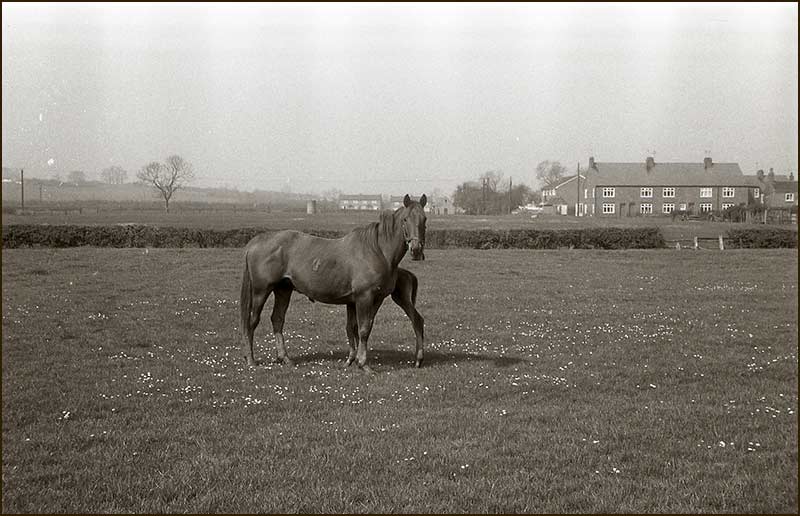
The field was owned by Harold Barlow (young Harold, the Butcher) and he sold it to Hamilton Knight, the Cropwell Bishop building company. The slope up from Nottingham Road and the Public Footpath across it would provide a challenge for the architect.

Richards Close is the smallest street in Cropwell Bishop: it has just 4 homes. Given the size of the plot, this is no surprise.

When the Parish Council had the task of giving it a name, they decided it would be appropriate to recognise the impact that the Richards family had had on Cropwell Bishop. It chairman at that time, David Barlow, contacted Edward Matthews to ask for his permission to use the name. He happily agreed.
So, which member is the Close named after, or does it refer to the family name?
Let’s start in the early 1800s with James Richards.
He was born in Granby in 1801 to father Anthony Richards and mother Elizabeth and was the first of their four children. To follow were; Anthony (1803), Mary (1805) and brother Gibson (1809).
In 1826, when 25, James married Elizabeth Parker at Granby Church. Elizabeth was 11 years older than James and had already been married: she also had four young children. Her maiden name was Porter and she was born in 1790 at Tythby.
She had married Thomas Parker of Cropwell Butler in 1814. They had their first child, Vincent, in 1820 and the following year they had both Alice and Thomas – maybe they were twins, we don’t know.
The fourth child, Mary was born in 1825 (or 1826, records conflict). Oddly, in less than a year of giving birth to Mary, she was marrying James Richards.
I cannot discover the reason for this sudden change in Elizabeth’s circumstances but it could be explained by Thomas Parker, suddenly dying.
Shortly after James and Elizabeth married, they moved to Cropwell Bishop where James became Innkeeper at the Wheatsheaf on Nottingham Road and Elizabeth gave birth to their child Eliza in 1828. A second child, Emma, would follow in 1835.

James and Elizabeth had a long and stable marriage together and two children went on to establish important families of their own in Cropwell Bishop: Vincent (the eldest child from Elizabeth’s her first marriage) and Eliza (the eldest child from her second marriage).
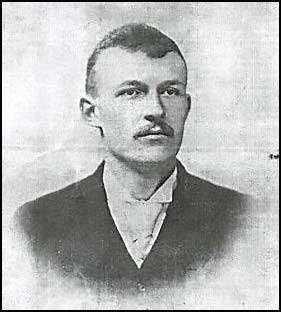
Vincent Parker became a farmer and he eventually owned 119 acres in Cropwell Bishop. He also followed the path of his step-father and became a Publican at the Canal House Pub next to the Canal Bridge on Nottingham Road.
He was also involved with the mining of Gypsum in Cropwell Bishop and went on to own 10 houses just a 100m from his home: they became known as Parkers Row.
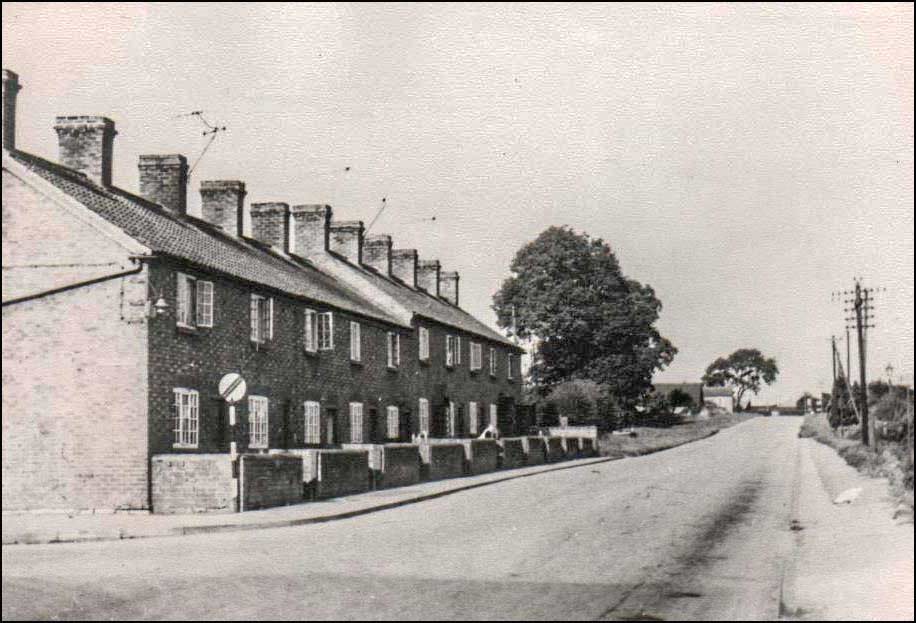
Meanwhile, Eliza Richards had a son in 1854 but the father remains a mystery. She named the boy, Robert Smith Richards.
Within two years, in 1857, she married farmer Matthew Cooper of Screveton and they had a child of their own, Mary.
Matthew appears to have been the “business brains” of the family and over the next 40 years built up his farm by acquiring land as it became available. It is interesting to note that in 1885 he advertised himself as a brickmaker as well as a farmer.
The family lived at 49 Nottingham Road in the early years and when Matthew was 60 they moved to The Yews (100m down the road). They were there until his death in 1898 when he was 68. He had given his step-son, Robert Smith, increasingly more responsibility for the running of the farm and it was he who took the business forward for the next generation.

Robert Smith married Emma Jane Lewin, from Cotgrave, in 1880 and they moved to Barton-in-Fabis where he farmed 115 acres. Their first two children, Matthew and Robert were born there.
After 3 years the family moved to Owthorpe Village where he farmed for the next 17 years. Robert Smith and Emma had 8 more children while living there. (Note to modern parents: they had 3 servants!)
Owthorpe children could easily walk the road to Cropwell Bishop School. Here is a School Class Photo showing the two eldest boys, Matthew and Robert, in 1893.
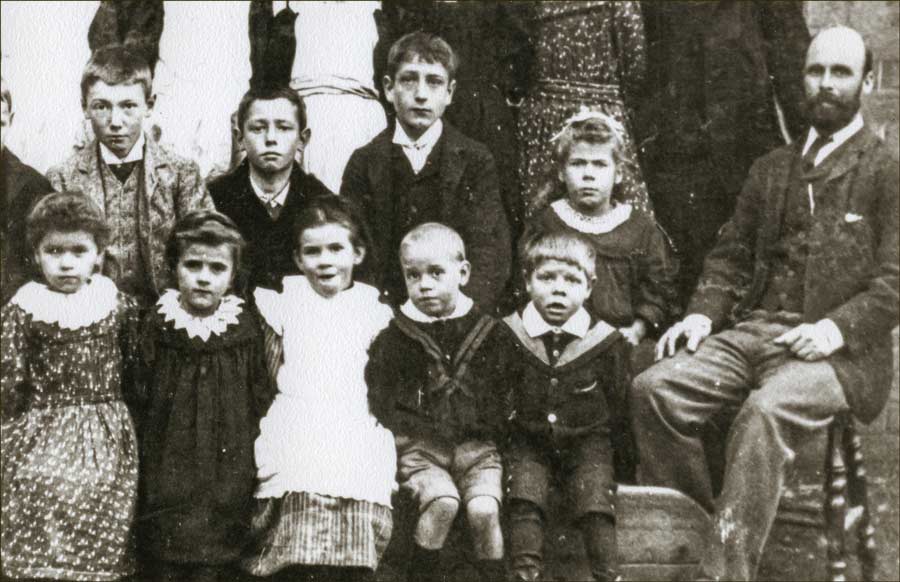

Once again, it was the oldest child who took forward the family farming business. I suppose that was the normal pattern in those days.
As a schoolboy, Matthew had been close to his grandparents, Matthew and Eliza Cooper. For a time, he even lived with them.
Surrounded by a growing number of brothers and sisters at home, finding a quite corner to do his homework each evening must have been a challenge (OK, I don’t suppose they had homework in those days).
Anyway, his grandparents lived at The Yews in Cropwell Bishop so he could avoid the morning, lunchtime, and afternoon walks to and from Owthorpe (school dinners didn’t exist, I am sure).
When Matthew Cooper died in 1898 (his wife, Eliza, had died 2 years earlier), Robert Smith, and his ever-growing family, moved into The Yews on Nottingham Road. He was still there in 1902 when Emma gave birth to their 11th child, Charlie. He was their final child: time for a rest Emma!

Matthew Cooper had left the bulk of his estate to stepson Robert Smith but he also left part to his grandson, Matthew Richards. This included 49 Nottingham Road, a farmhouse. The will stipulated that until Matthew reached the age of 26, the house must be held by his father.
In 1908 he reached the age of 26 and he married Annie Hilson (of Bottesford). I can’t confirm if they did indeed move into number 49, but I do know that in 1911 they were living at The Yews (just across the road from where Richards Close is today).
This was where his father and family had been living but in 1911 they were all living at Sutton, a tiny hamlet near Granby. Robert Smith always had been one for regularly moving house.
Matthew and Annie already had a daughter, Grace, and before the year was out, they had a second, Edith. A son, Edward, joined them in 1916.


In his later years, Edward recalled his growing up in Cropwell Bishop. Shortly after the above photograph was taken, he was awarded an Art Scholarship to attend Trent Bridge Central School for Boys in Nottingham from 1928 to 1931. Every day he cycled there from Cropwell Bishop. But when he was 14, he had to leave school to work full-time on his father’s farm.

In 1930 Robert Smith Richards died: he was 75. His wife, Emma had died the year before. In his will he requested that all his assets be sold and divided equally between his children except for two who were already provided for.
It was just after this that Mathew decided he wanted to buy a farm of his own. In 1932 he moved his family to Rempstone and stayed there for the rest of his life. He still owned land in Cropwell Bishop and let it out to local farmers.
Here is a photo of him and his family at his 90th birthday in 1970. He died at the age of 93.
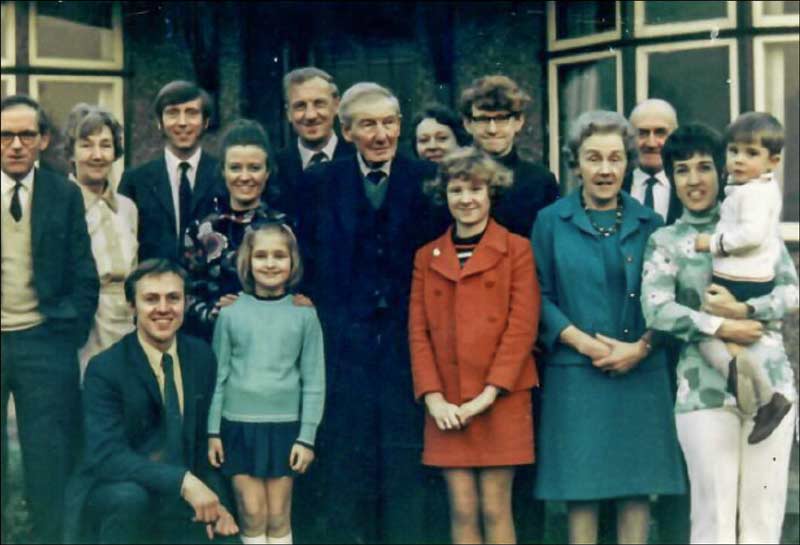
Matthew’s son Edward must have inherited his father’s long-life genes because he too lived to the age of 93. He died in 2009.
His son, Anthony provided details, insights and photographs for the writing of this article.
The colourful history of the Richards family in Cropwell Bishop is enough to fill Richards Close. With just 4 houses you could allocate a key character to each one of the houses.
But there is no need for that. Now we can all look upon Richards Close differently: a place linked to a large energetic family spanning two centuries.
Do you think the Postman, Amazon man, and other delivery people ever wonder at the history of its name? No, I don’t think so either.
But now, should they ever ask, you can enlighten them.
Tony Jarrow
Note:
Particular thanks to Anthony Richards for insights and photographs. Also, thanks to Anne Terzza, Pam Barlow, Tony Carter, John Bradley, John Greenwood and Lesley Shuttlewood for their help with this article.
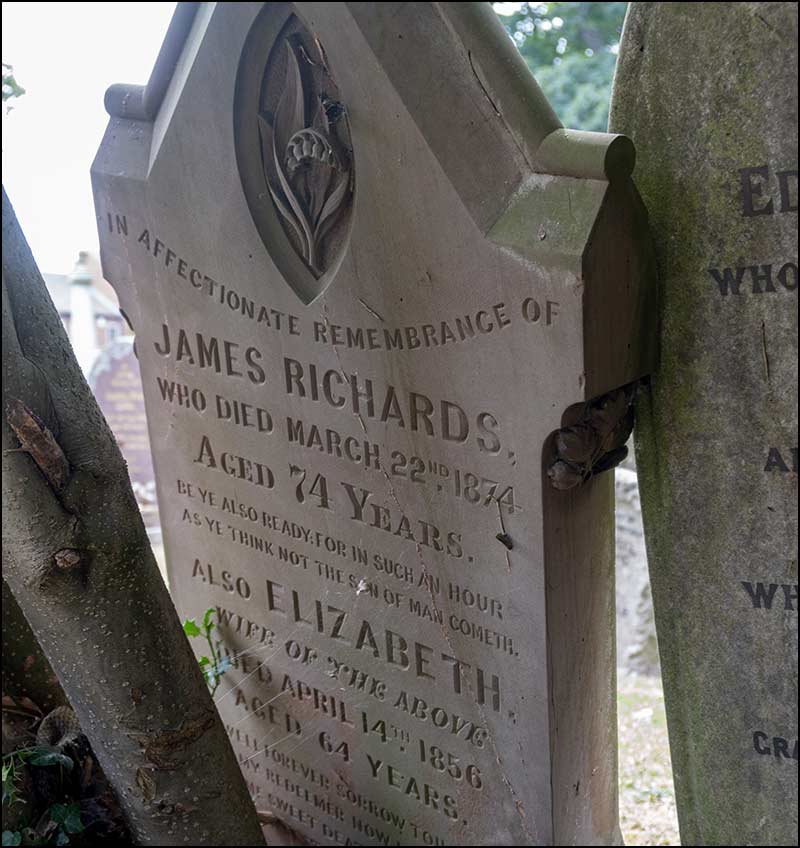
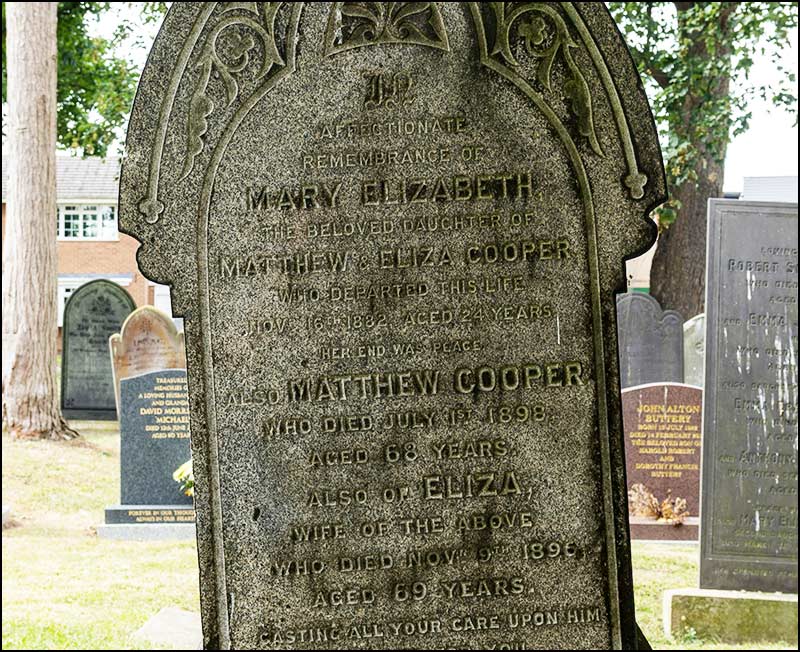

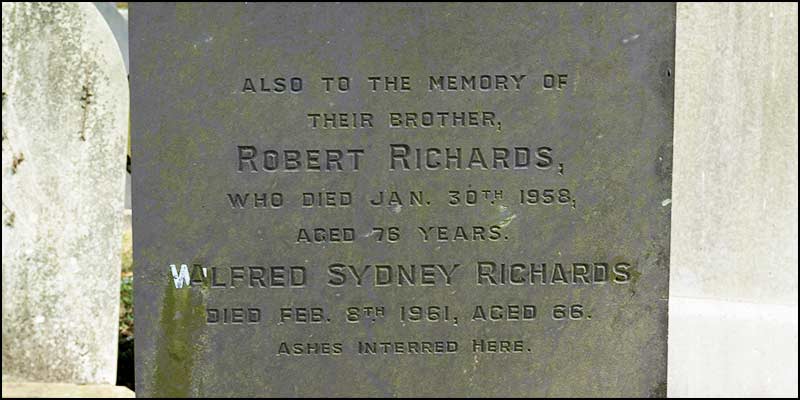
This is Richards Close now (August 2020).
